Bright Future for Western Solar
Air Date: Week of September 6, 2024
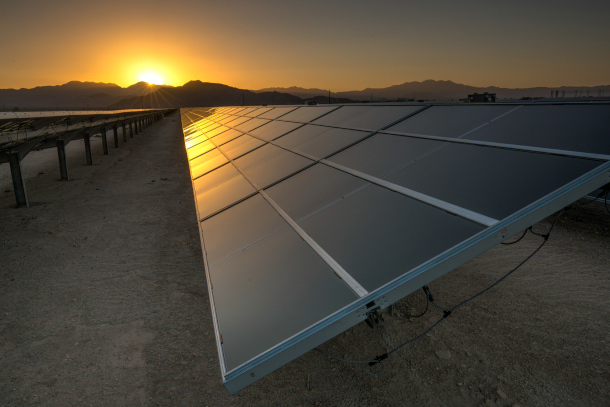
The proposed updated Western Solar Plan would extend solar development guidance to five additional western states: Idaho, Wyoming, Montana, Washington, and Oregon. (Photo: Tom Brewster Photography)
The Bureau of Land Management is updating its master plan for developing solar energy on BLM lands in the West, to help the US meet ambitious clean energy targets. Gregg DeBie is an attorney with the Wilderness Society and joins Host Aynsley O’Neill to explain how the proposed plan aims to reduce barriers to solar by highlighting “previously disturbed” lands and automatically excluding critical habitat.
Transcript
DOERING: From PRX and the Jennifer and Ted Stanley Studios at the University of Massachusetts, Boston, this is Living on Earth. I’m Jenni Doering.
O’NEILL: And I’m Aynsley O’Neill.
Public lands in the United States have historically been used for a variety of purposes, ranging from wildlife habitat to recreation to fossil fuel development. In fact, as of 2022, about 23 million acres of public lands were under lease for oil and gas extraction. But public lands are also important for building out renewable energy, like solar. And the federal Bureau of Land Management, or BLM, the largest landowner in the country, is now in the process of bringing its plans to develop solar energy in the Western US up to date. So, this August BLM released a proposal for how it would update this Western Solar plan, which is expected to be finalized by the end of the year. The update earmarks around 32 million acres for possible solar development. Gregg DeBie is a Senior Staff Attorney for The Wilderness Society and he’s here to walk us through what this new plan might mean for the west. Welcome to Living on Earth, Gregg!
DEBIE: Thank you. Great to be here, Aynsley.
O'NEILL: Gregg, from what I understand, the Bureau of Land Management first wrote a plan for Western solar development way back in 2012. And this proposal seeks to update that plan. So, what major changes to solar development in the West are being proposed with this?
DEBIE: Yeah, I'd say right off the top, the biggest change is BLM is broadening the geographic scope of the plan. The original 2012 plan created a blueprint for solar development in the six southwestern states, which at that time was where most solar development was expected to occur, so California, Arizona, New Mexico, Utah, and Nevada, and Colorado. New technologies, such as photovoltaic panel technology, which converts sunlight directly into energy, has really taken the place of the old technology in 2012, which was concentrated solar farms. And that old technology required more sunlight, it required flatter land. So, BLM at the time really just focused on the six southwestern states where most of the sun was and most of the flatter land was. Now that there is new technologies, BLM determined that it needed to expand the plan to cover the northern Rocky states and the Pacific Northwestern states as well. So, Montana, Wyoming, Idaho, Washington, Oregon. Previously, solar development could still occur in those five other states, but it was happening in a more ad hoc fashion and without the guidance that's set forth in this plan.
O'NEILL: And what is the sort of goal of these updates, you know? What is the Bureau of Land Management really hoping to accomplish here?
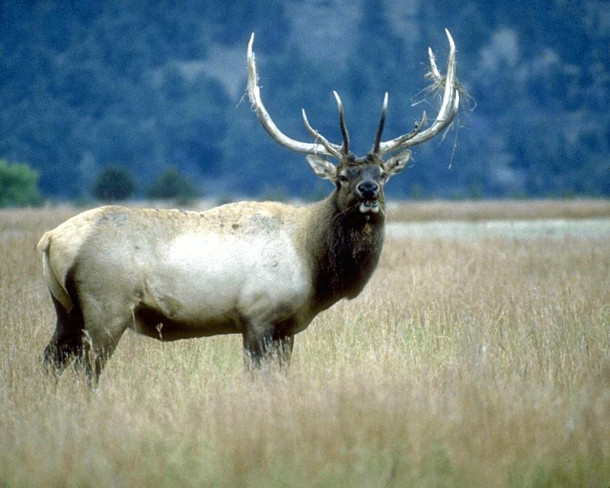
From the outset, the plan excludes about 130 million acres of public lands from solar development to protect migration corridors, critical habitat, monuments, and wilderness areas. (Photo: Oregon Department of Agriculture, Flickr, CC BY-NC-ND 2.0)
DEBIE: From my perspective, based on what BLM has indicated in the plan itself and from its public statements, BLM, for one, is responding to the clean energy goals set by Congress in the Energy Act of 2020 and in various executive orders issued by the Biden Administration. Those goals are 25 gigawatts of clean energy on public lands by 2025 which BLM has already met and surpassed that goal earlier this year. And then there's a goal of a carbon free electricity sector by 2035, and net zero emissions economy by 2050. So, there's a lot of work to do to accomplish those last two goals. And this updated solar plan hopefully will help put us on the path to a clean energy transition. And then, you know, just generally speaking, the primary goal of the plan is really just to determine which lands should be open or closed to solar applications based on the presence of resource conflicts, the concerns of local communities and tribal nations, and just to determine where solar is not appropriate and where it might be suitable.
O'NEILL: So, walk me through this term, "previously disturbed land." What does that mean in this context?
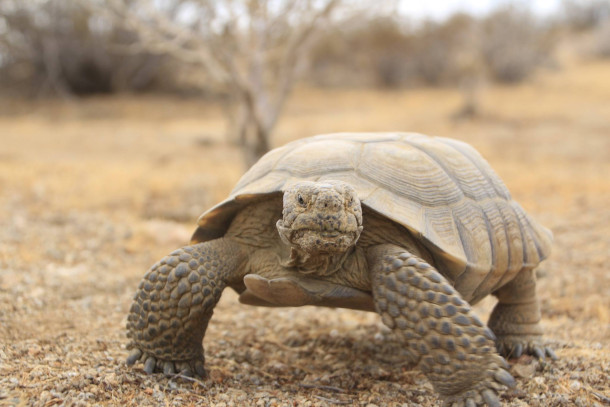
BLM worked with the U.S. Fish and Wildlife Service to identify and exclude critical habitat and connectivity lands for endangered species, like the Mojave Desert Tortoise, from solar development. (Photo: Bureau of Land Management, Flickr, CC BY 2.0)
DEBIE: Yeah, "previously disturbed." It's a little bit of a vague concept, and the way it's laid out in the plan is a little wonky, but BLM considers lands to be previously disturbed, where the soils or the vegetation have been altered from historical reference conditions, so where humans have caused a disturbance on the land. So, think roads, buildings and other infrastructure. And the question of previously disturbed lands is important, and it arises here because BLM identified lands as available to solar application if they are either within 15 miles of existing or planned transmission lines, or if they're outside that 15 mile buffer, if a solar application is on what qualifies as "previously disturbed lands," then BLM will accept and process that application and consider whether to approve or deny that project.
O'NEILL: So, it sounds like the idea is to steer projects away from a sort of pristine habitat. In what other ways does the proposal account for wilderness and wildlife protection?
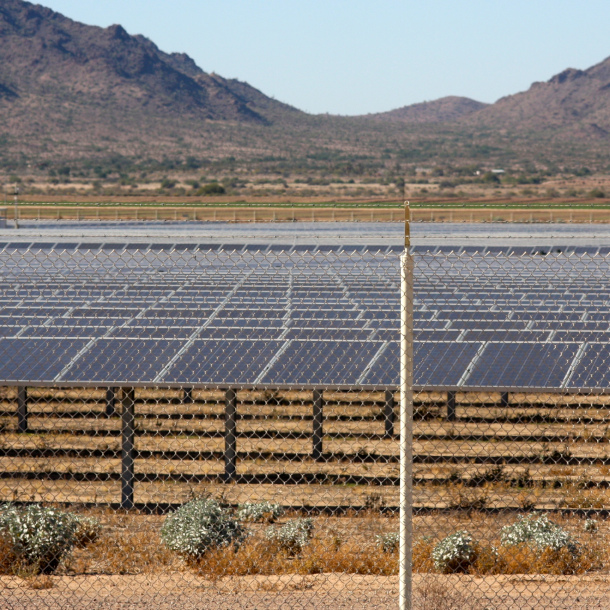
Only about 2% of the 32 million acres open for solar development across 11 western states, or 700,000 acres, is projected to be developed to meet national solar energy needs by 2045. Those 700,000 acres could power tens of millions of homes. (Photo: Kevin Dooley, Flickr, CC BY 2.0)
DEBIE: Yeah, a plan of this size covering 11 states can never be perfect. And no plan of this size and scope ever is. But we do think it's a critical first step that BLM needed to undertake to help the transition to a clean energy economy. And we do think BLM did some things right to protect wildlife and wilderness and public lands generally. Right off the bat, the plan prohibits solar development on over 130 million acres of the most important public lands that the agency knew immediately would never be suitable for utility scale solar development, so places like monuments and wilderness areas, critical habitat, etc, are excluded from solar development. And then you know more specifically, BLM did things to protect wildlife migration corridors, which are critical for biodiversity and the long-term health of wildlife populations. They're essential for subsistence lifestyles and recreational economies and western communities. BLM also worked with the Fish and Wildlife Service to map specific areas that are important to about 40 specific species that are listed under the Endangered Species Act, so it identified, for example, important habitat connectivity lands for the Mojave Desert tortoise. And now we're committed to ensuring that BLM successfully implements the solar plan in a manner that avoids the most conflicts and addresses the concerns of local communities and tribal nations.
O'NEILL: So, Gregg, if you tally it all up, there's something like 160 million acres of public lands that are managed by BLM across these 11 western states. And this plan takes about, you know, 32 million of those acres and leaves them open to solar development. But that still sounds like a lot to me. I mean, I can't imagine that that's all going to be chock block full of solar projects. So how much of that land is BLM expecting to actually be developed for these solar projects?
DEBIE: Yeah, that, I'm glad you asked that question. This is really important. Of course, the 32 million acre figure grabs the headlines, and it's shocking when you first see that number, but it's important to realize that not all of those lands will be covered in solar panels. So, BLM looked at a couple studies from the Department of Energy and the National Renewable Energy Laboratory to estimate that only about 700,000 acres, and that's still a large amount, but again, remember, this is spread out over 11 western states, about 700,000 acres of lands will be needed to meet our solar energy needs by the year 2045, so about 20 years from now. And these 700,000 acres represents barely 2% of the 32 million acres that BLM has determined might be suitable for solar development, so 98% of these lands, even under an aggressive build out scenario, will not be developed with solar projects.
O'NEILL: Gregg, why is this update so important? What is going to come out of it?
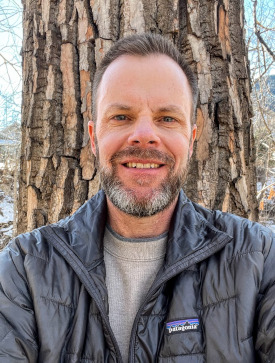
Gregg DeBie is a Senior Staff Attorney for The Wilderness Society. (Photo: Courtesy of Gregg DeBie)
DEBIE: So, climate change is the most pressing environmental and social justice issue of our time. We think the science is unequivocal that greenhouse gas emissions are causing climate change effects, and that immediate action is necessary to avert the worst impacts. And public lands offer some of the best renewable energy sources to allow us to quickly transition to a clean energy economy. Using the formula that BLM relies on, these 700,000 acres could potentially support over 93,000 megawatts of solar power, or 93 gigawatts. This is enough to power tens of millions of homes. I think it's over 30 million homes or so. So, we would still need a mix of other renewable energy sources, like wind and geothermal and others, but this plan will go a long way to meeting our clean energy goals. We think it's a thoughtful, comprehensive plan that is consistent with what we call a "smart from the start" approach to renewable energy development, where careful, thoughtful planning that considers the input of local communities and tribes in the beginning, will lead to faster deployment of solar energy in the end.
O'NEILL: Gregg DeBie is a Senior Staff Attorney for the Wilderness Society. Gregg, thank you so much for joining me today.
DEBIE: Thank you. It was great to be here.
Links
Bureau of Land Management | “Bureau of Land Management Releases proposed Western Solar Plan”
Living on Earth wants to hear from you!
Living on Earth
62 Calef Highway, Suite 212
Lee, NH 03861
Telephone: 617-287-4121
E-mail: comments@loe.org
Newsletter [Click here]
Donate to Living on Earth!
Living on Earth is an independent media program and relies entirely on contributions from listeners and institutions supporting public service. Please donate now to preserve an independent environmental voice.
NewsletterLiving on Earth offers a weekly delivery of the show's rundown to your mailbox. Sign up for our newsletter today!
 Sailors For The Sea: Be the change you want to sea.
Sailors For The Sea: Be the change you want to sea.
 The Grantham Foundation for the Protection of the Environment: Committed to protecting and improving the health of the global environment.
The Grantham Foundation for the Protection of the Environment: Committed to protecting and improving the health of the global environment.
 Contribute to Living on Earth and receive, as our gift to you, an archival print of one of Mark Seth Lender's extraordinary wildlife photographs. Follow the link to see Mark's current collection of photographs.
Contribute to Living on Earth and receive, as our gift to you, an archival print of one of Mark Seth Lender's extraordinary wildlife photographs. Follow the link to see Mark's current collection of photographs.
 Buy a signed copy of Mark Seth Lender's book Smeagull the Seagull & support Living on Earth
Buy a signed copy of Mark Seth Lender's book Smeagull the Seagull & support Living on Earth

